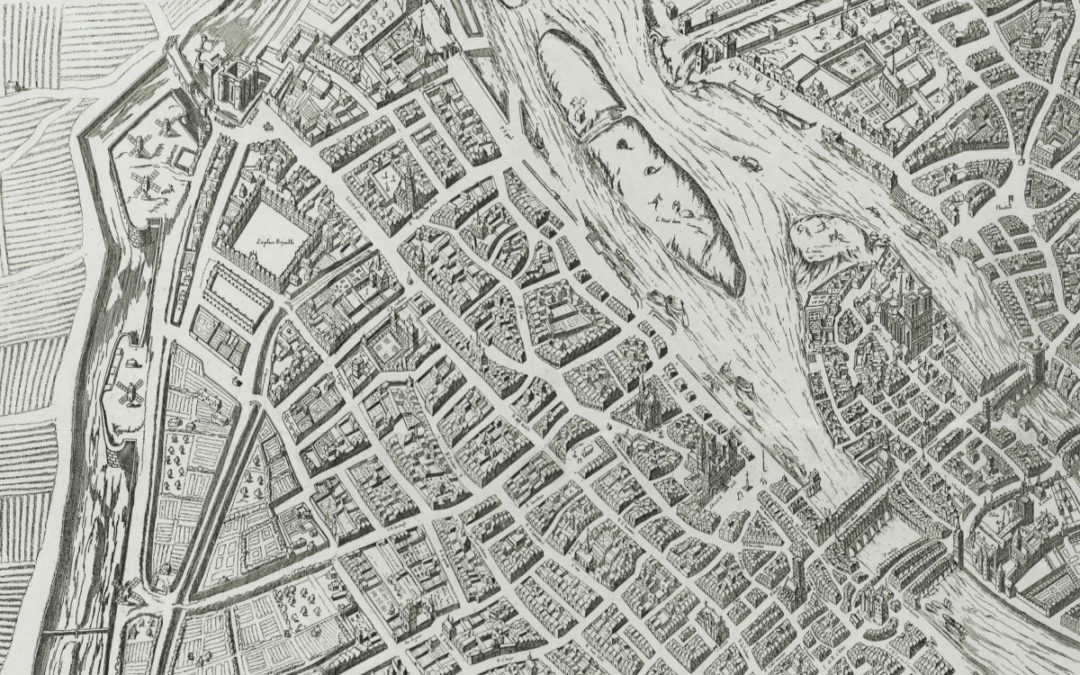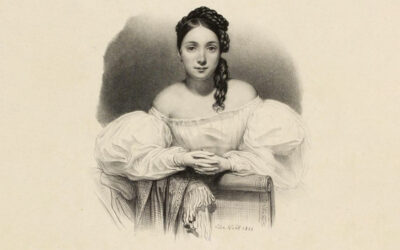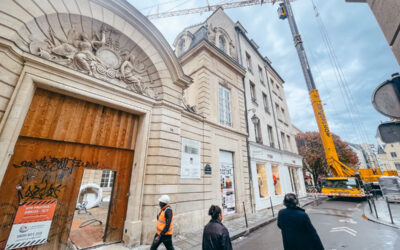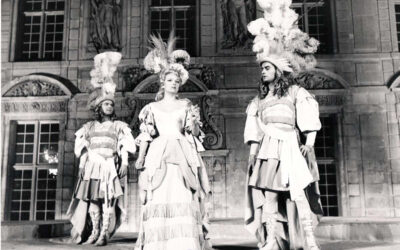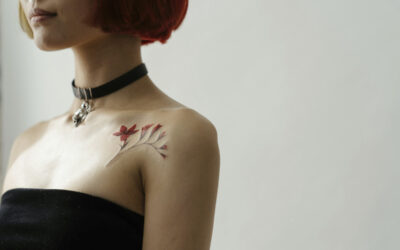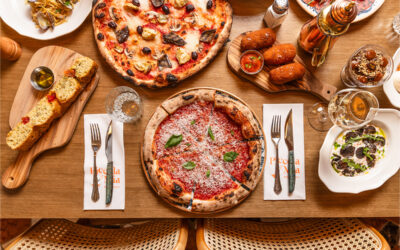Extract from the Quesnel plan – 1609
Everyone knows the Place des Vosges, its galleries, its square. But who knows – still in the Marais – the Place de France? Also wanted by Henry IV, remaining unfinished after the latter's death, it nevertheless left its mark in our neighborhood; without always knowing it, we even regularly survey its contours.
It was in 1608 that the project was born to create a new square, the third of this type after Place Dauphine and Place Royale (our current Place des Vosges). It is then a question of "vitalizing", to the north-east of the capital, a vast space wedged between the Parisian wall and the Temple enclosure, an area until now devoted mainly to market gardening. To do this, the State decides to create, in addition to the place itself, new streets, new buildings and to mix them, according to a method of operation which has proven itself at the Place des Vosges, royal administrations, homes , arcaded galleries and shops.
Requested, the Temple cedes the plot. As always in this type of town planning operation, the crown designs, orders, decides, but it is private financiers who take charge of the work to generate income, through the resale of private mansions, or boutiques for substantial profits. . Under the leadership of Sully, the project plans to create a new monumental gate, open in the medieval enclosure and seven identical pavilions around a semi-circular square. It is also planned, to access the square, to trace eight streets arranged in a star pattern.
Supporting its north-south axis on the existing rampart as well as on rue de Turenne, the square, with a diameter of 153m, is called “de France” and honors the different provinces of the Kingdom.
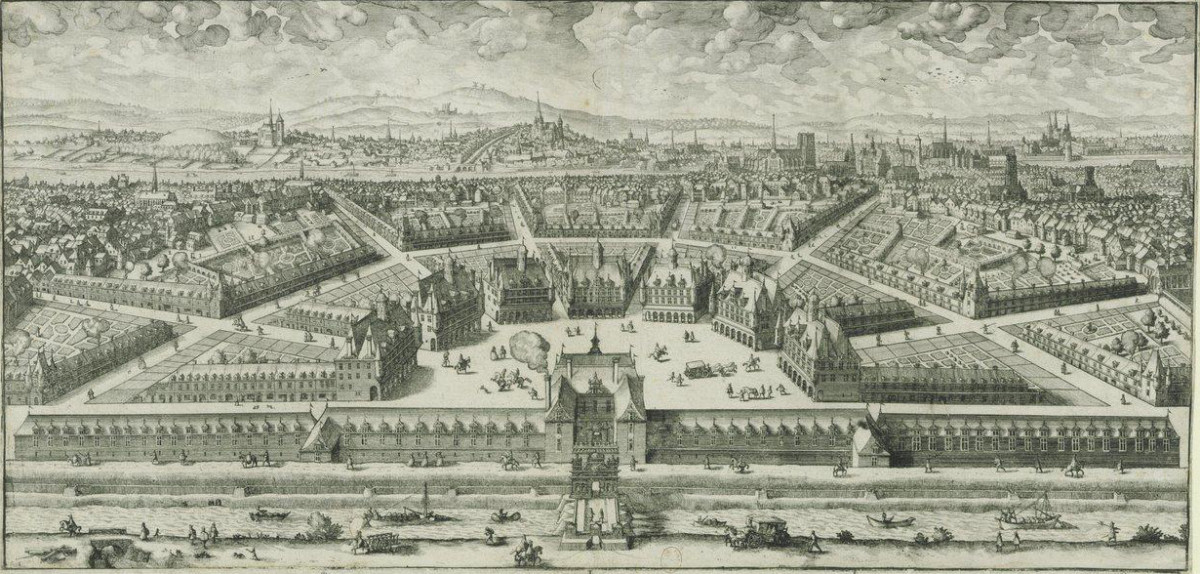
Project for the “Place de France” in 1610, by Claude Chastillon
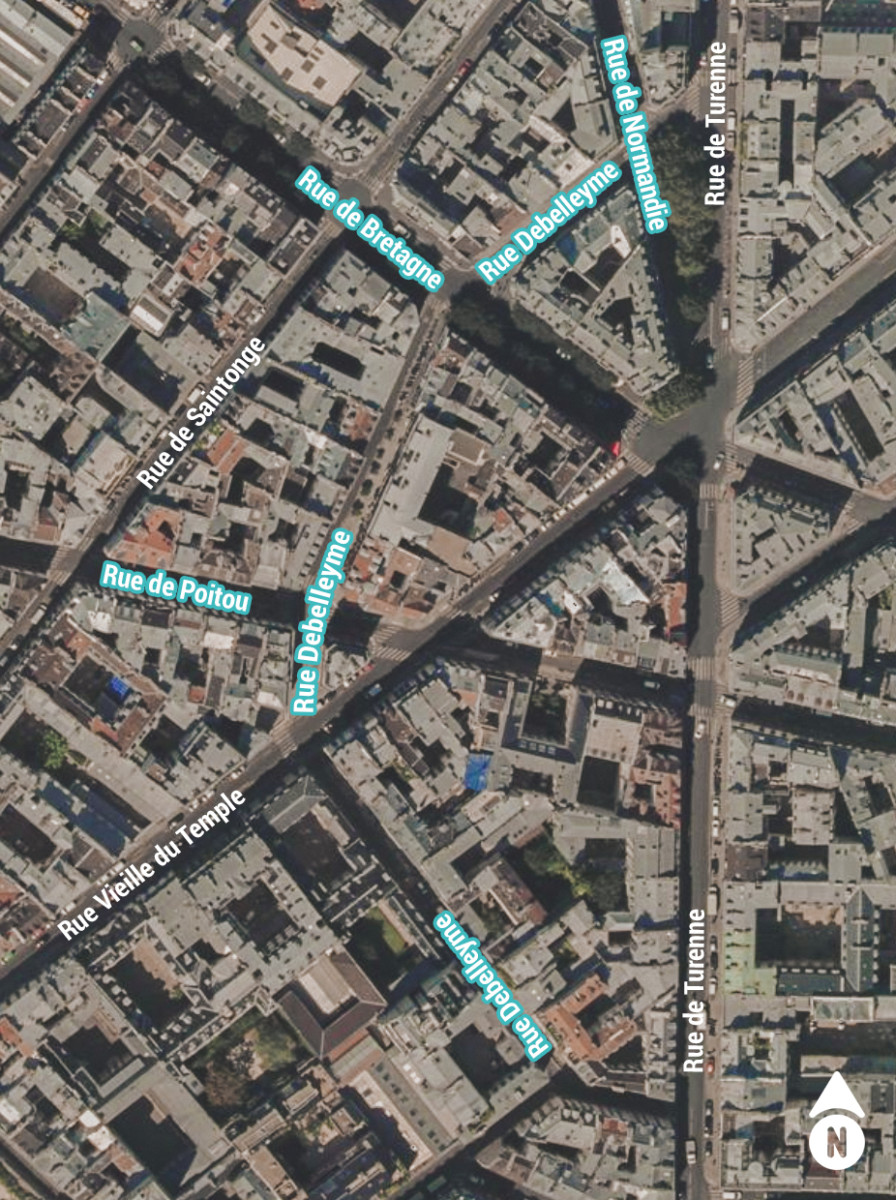
The new arteries traced and for certain breakthroughs, thus bear the names of Poitou, Brittany, Burgundy, Picardy, Dauphiné, Provence, Languedoc and Guyenne. Behind the square, arc-shaped streets were also designed to facilitate traffic (rue Debelleyme evokes this perfectly today).
The death of Henry IV unfortunately interrupted the work. None of the planned buildings are rising from the ground and the “France” gate is not open in the rampart either. However, the impetus is given to this hitherto neglected corner of the Marais. Market gardeners, owners, convents in turn cede the plots of land they own. Instead, other streets, other hotels, other shops, a whole new neighborhood are emerging. The “investors” are having a field day (even then!). Among these, let us at least remember the name of Claude Charlot: the street which bears his name intersects the very attractive Rue de Bretagne, one of the eight arteries which could have led to our ghost square...
FOR PASSIONATES OFUS
Juliette Drouet actress, muse and mistress of Victor Hugo
At 14 rue Sainte-Anastase, from 1836 to 45 and at 12 from 1845 to 48, a few hundred meters from Place des Vosges, lived the muse and lover of Victor Hugo, Juliette Drouet née Julienne Gauvain.
Rue Vieille-du-Temple: the fabulous construction site restarts
A luxury hotel will be created at the end of the work. On the ground floor, the old stables and carriage houses will house the restaurant on the large courtyard, while the first courtyard, on rue Vieille-du-Temple, will feature two businesses continuing its 19th century layout.
The Marais festival, a fabulous story
The Festival du Marais dates back to a time that those under 60 cannot know. However, this leading artistic event was for a long time one of the most popular cultural events in the capital. For a quarter of a century, from 1962 to 1987, this unique festival…
NOW ON THE MOOD MARSH
The best tattoo parlors in Marais
Tattooing, an age-old practice, has long been the prerogative of convicts, dock workers, the underworld and sailors. Although it has become democratized, now affecting all profiles and concerning one in five French people, including 16% women compared to 10% men, it still remains taboo due to its definitive and transgressive nature.
Juliette Drouet actress, muse and mistress of Victor Hugo
At 14 rue Sainte-Anastase, from 1836 to 45 and at 12 from 1845 to 48, a few hundred meters from Place des Vosges, lived the muse and lover of Victor Hugo, Juliette Drouet née Julienne Gauvain.
Piccola Mia, the pizzas of the Republic
On the Place de la République, a brasserie with Italian accents has just opened, which quickly made people forget the old Pizza Pino. Welcome to Piccola Mia, the fruit of the joyful encounter between Italian chef Denny Imbroisi, pizza chef Julien Serri and mixologist Matthias Giroud who creates a creative cocktail menu.

